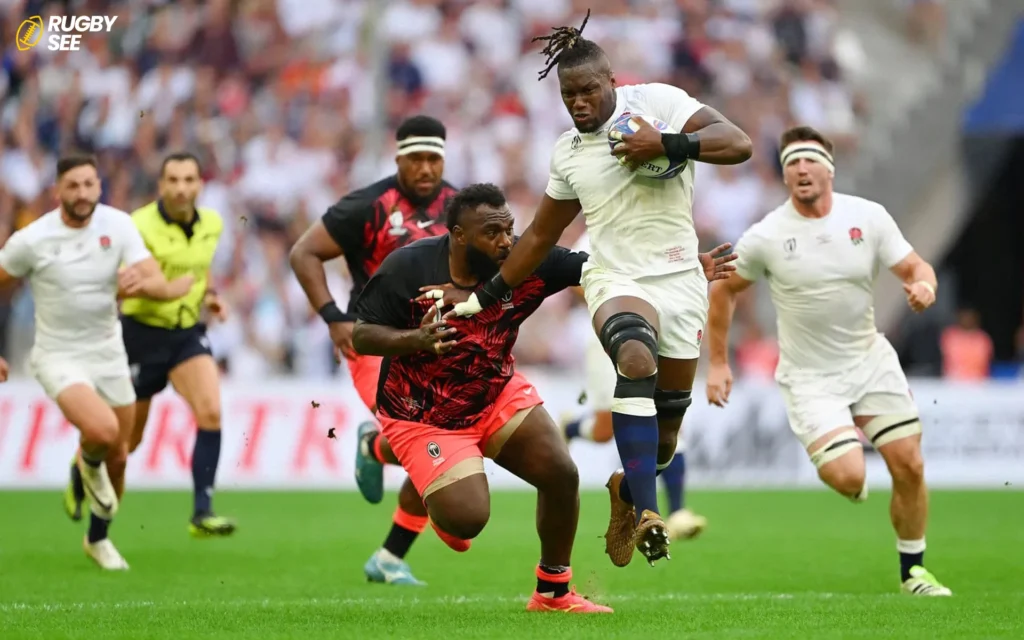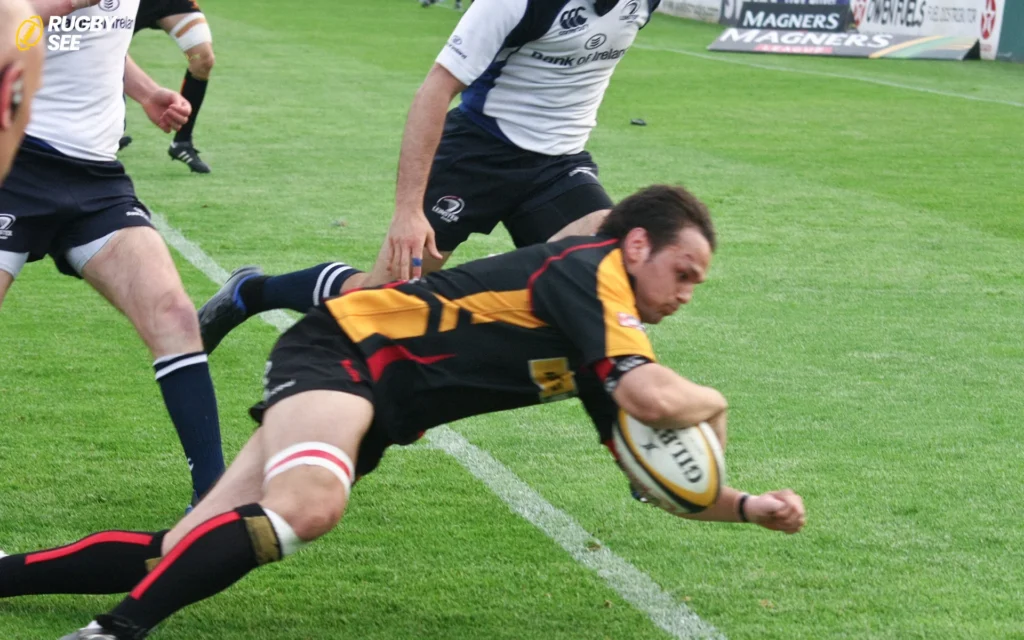Have you ever noticed the tapes around the thighs of rugby players during a match and wondered what the purpose of the tapes are? It’s a common sight in rugby games, from amateur leagues to the international stage. Far from being just a fashion statement, this exercise plays an important role in player performance and injury prevention. In this Rugbysee article, we’ll explore the reasons behind hamstring bonding in rugby and highlight the benefits it brings to players in this demanding sport.
The Purpose of Thigh Taping in Rugby
1. Support and Stability
One of the primary reasons rugby players tape their thighs is to provide additional support and stability to the muscles and joints. The quadriceps and hamstrings are under constant stress during a game, given the running, jumping, and tackling involved. Taping helps to compress and support these muscles, reducing the risk of strains and injuries.
2. Injury Prevention
Rugby is a high-impact sport, and injuries are not uncommon. Thigh taping acts as a preventative measure, helping to protect muscles and tendons from overextension and tears. By securing the muscles in a more stable position, the tape can reduce the likelihood of acute injuries during the game.

3. Enhanced Performance
Beyond injury prevention, thigh taping can also enhance a player’s performance. The compression provided by the tape can improve blood circulation to the muscles, which helps in maintaining muscle temperature and reducing the risk of cramps and fatigue. This can be particularly beneficial in the latter stages of a game when physical endurance is tested.
4. Recovery Aid
Taping isn’t just for use during a game; it’s also a tool in the recovery process. For players dealing with muscle soreness or minor injuries, taping can provide relief and support as they heal. The slight pressure exerted by the tape can facilitate better blood flow, aiding in the recovery and healing process.
The Technique of Thigh Taping
The effectiveness of thigh taping in rugby depends significantly on the technique used. It’s not simply about wrapping tape around the thigh; there’s an art to it. Trained physiotherapists or sports medicine professionals often apply the tape, following specific patterns that align with the muscle fibers. This ensures that the tape provides optimal support without restricting movement. Players might use different taping techniques depending on the area of concern or the type of support they need if you want to know about deadlift in Rugby read Should rugby team players deadlift.
Types of Tape Used
Not all sports tapes are created equal, and rugby players typically use specific types of tape for their thighs. Kinesiology tape is among the most popular choices due to its elasticity and the comfort it provides. It allows for a full range of motion, which is crucial in a dynamic sport like rugby. Traditional athletic tape is also used, especially for more significant support and stabilization.
A Sign of the Physical Demands of Rugby
The widespread use of thigh taping in rugby is a testament to the physical demands of the sport. It highlights the extent to which players go to protect their bodies from the rigors of the game. From sprinting and evading tackles to engaging in scrums, every aspect of rugby tests the limits of the human body. Thigh taping is one of the many tools players use to ensure they can perform at their best, game after game.
The Cultural Aspect of Thigh Taping in Rugby
Beyond the physical benefits, thigh taping has woven itself into the fabric of rugby culture. For players, the ritual of taping up before a game can serve as a psychological boost, a reminder of the battles to come and the preparation they’ve undertaken. It symbolizes readiness, not just physically but mentally, for the challenges ahead on the pitch. This cultural aspect fosters a sense of unity and identity among players, reinforcing the team spirit that is so crucial in rugby.

Educating the Next Generation of Rugby Players
As the practice of thigh taping becomes more visible, it also plays a role in educating upcoming rugby players about the importance of injury prevention and body care. Young athletes looking up to their professional idols learn early on the significance of such practices in extending their playing careers and enhancing their performance. Rugby clubs and schools are increasingly incorporating injury prevention techniques, including taping, into their training programs, ensuring that players adopt these beneficial habits from the start.
The Role of Sports Science in Thigh Taping
The advancement of sports science has played a significant role in optimizing the practice of thigh taping. Research into the biomechanics of rugby and the specific demands it places on the body has led to more effective taping techniques. Sports scientists and physiotherapists work closely with teams to tailor taping methods to individual players, considering factors such as previous injuries, muscle strength, and the player’s position on the field. This personalized approach maximizes the benefits of thigh taping, contributing to the overall well-being and performance of the players and if you want to know about Using helmets in Rugby read should rugby players wear helmets.
Navigating the Rules and Regulations
It’s worth noting that the practice of thigh taping in rugby, like any other form of equipment or body modification used during play, is subject to the rules and regulations of the sport. Governing bodies such as World Rugby set guidelines on the use of tape, ensuring that it does not provide an unfair advantage or pose a risk to other players. Compliance with these regulations is paramount, as the integrity of the sport and the safety of all participants are at stake.
The Future of Thigh Taping in Rugby
As rugby evolves, so too will the techniques and technologies associated with thigh taping. Innovations in tape materials and application methods promise to offer even greater support and protection to players. Furthermore, the ongoing research in sports medicine may reveal new insights into the benefits of taping, potentially expanding its use. However, the core reasons behind the practice—support, injury prevention, performance enhancement, and recovery aid—will remain as vital as ever to the game of rugby.

To the untrained eye, the tape around a rugby player’s thighs might seem inconsequential. However, as we’ve uncovered, it plays a vital role in supporting the physical well-being of players. Thigh taping offers a combination of support, injury prevention, performance enhancement, and recovery aid, making it an indispensable part of modern rugby. Whether you’re a player, coach, or fan, understanding the purpose behind this practice offers deeper insight into the complexities and strategies of managing player health and performance in one of the world’s most demanding sports.
As rugby continues to evolve, so too do the techniques and strategies for player care and performance optimization. Thigh taping is just one piece of the puzzle, reflecting the sport’s blend of tradition, innovation, and a relentless pursuit of excellence. For players at all levels, it’s a reminder that success on the field is built on a foundation of meticulous preparation, of which physical care and injury prevention are key components.










